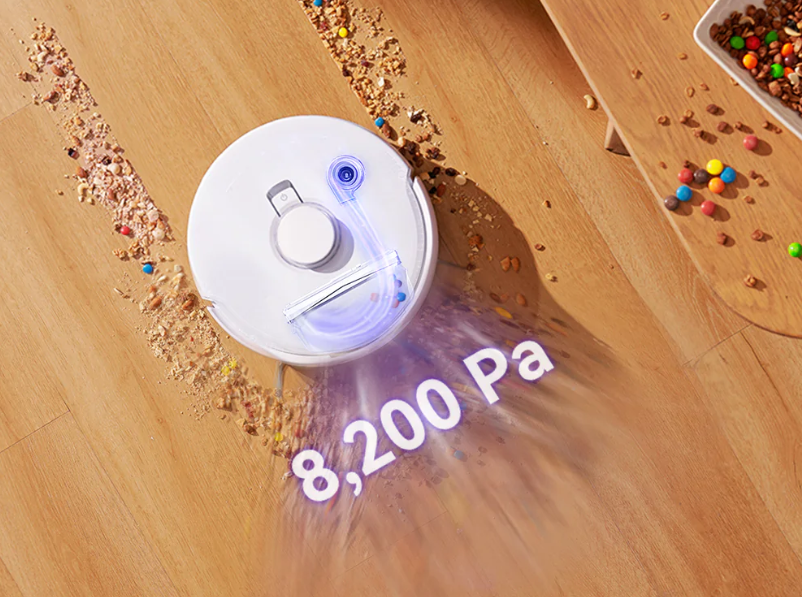Robot vacuums have become popular household appliances due to their convenience and efficiency. However, their cleaning performance can vary significantly based on several factors.
Understanding these factors can help you optimize the use of your robot vacuum and ensure it operates at peak efficiency. This blog post explores the key elements that influence the cleaning ability of a robot vacuum.
Suction Power
Suction power is one of the most crucial factors determining how well a robot vacuum can pick up dirt, dust, and debris. Higher suction power means the vacuum can lift heavier particles and clean deeper into carpets and rugs.
However, increased suction often comes with higher energy consumption and noise levels. Balancing suction power with energy efficiency and noise reduction is essential for optimal performance.
The navigation system of a robot vacuum plays a significant role in its cleaning efficiency. Advanced models use sophisticated mapping technologies such as LiDAR or visual SLAM to create accurate maps of your home.
These maps help the vacuum navigate efficiently, avoid obstacles, and cover the entire floor area systematically. Less advanced models may rely on random navigation patterns, which can result in missed spots and inefficient cleaning.
Battery Life and Charging
The battery life of a robot vacuum affects how long it can clean before needing to recharge. A longer battery life allows the vacuum to clean larger areas in one go.
Additionally, the ability of the vacuum to return to its charging station and resume cleaning after recharging is vital for maintaining cleanliness, especially in larger homes. Shorter battery life may require frequent recharges, interrupting the cleaning cycle and reducing overall efficiency.
Brush Types and Configurations
The type and configuration of brushes on a robot vacuum impact its ability to clean various surfaces. Some vacuums have side brushes designed to sweep dirt into the vacuum’s path, while others have main brushes for more intensive cleaning.
Brushes made from different materials, such as rubber or bristle, are suited to different tasks. Rubber brushes are generally better for pet hair, while bristle brushes excel at lifting dirt from carpets. The combination of these brushes can significantly enhance the vacuum’s overall cleaning performance.
Dustbin Capacity
The size of the dustbin determines how much dirt and debris the robot vacuum can collect before needing to be emptied. A larger dustbin is advantageous for bigger homes or areas with more dirt, as it allows the vacuum to clean for longer periods without interruption. Regularly emptying the dustbin ensures that the vacuum maintains optimal suction and cleaning efficiency.
Floor Type
The type of flooring in your home can affect the cleaning performance of a robot vacuum. Hard floors, such as tile or hardwood, are generally easier for vacuums to clean as debris remains on the surface.
Carpets and rugs, especially those with high piles, can be more challenging due to dirt and debris embedding deeper into the fibers. Selecting a vacuum with appropriate brush types and suction power for your specific floor type is essential for achieving the best results.
Obstacles and Clutter
The presence of obstacles and clutter can hinder the cleaning efficiency of a robot vacuum. Cords, toys, and furniture can obstruct the vacuum’s path, causing it to miss spots or become stuck.
Keeping the floor free of small objects and organizing furniture to create clear pathways can help the vacuum navigate more effectively and clean more thoroughly.
Maintenance and Upkeep
Regular maintenance is critical to ensuring your robot vacuum operates at peak performance. This includes cleaning the brushes, emptying the dustbin, and checking the filters.
Clogged filters or dirty brushes can significantly reduce suction power and cleaning efficiency. Following the manufacturer’s maintenance guidelines can prolong the lifespan of your vacuum and maintain its cleaning capabilities.
Smart Features and Customization
Modern robot vacuums often come with smart features that allow for the customization of cleaning schedules and patterns. Setting specific cleaning times and zones can optimize the vacuum’s performance, ensuring that high-traffic areas receive more frequent cleaning.
Additionally, using features like virtual boundaries can prevent the vacuum from entering certain areas, reducing the risk of getting stuck or damaging delicate items.
Conclusion
Several factors influence the cleaning performance of a robot vacuum, including suction power, navigation technology, battery life, brush types, dustbin capacity, floor type, obstacles, maintenance, and smart features.
Understanding these factors can help you choose the right robot vacuum for your needs and maintain its efficiency over time. By optimizing these elements, you can ensure that your robot vacuum keeps your home clean and tidy with minimal effort on your part.





